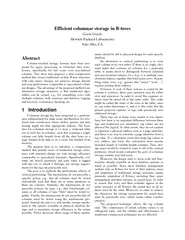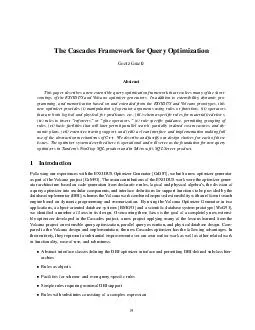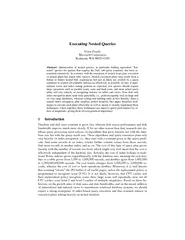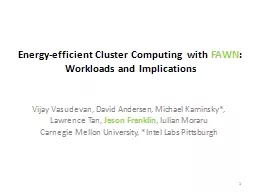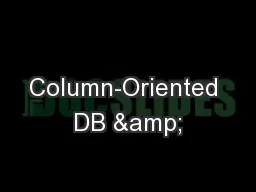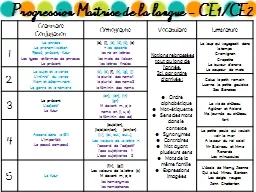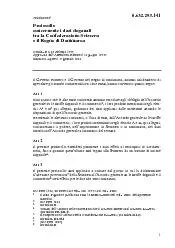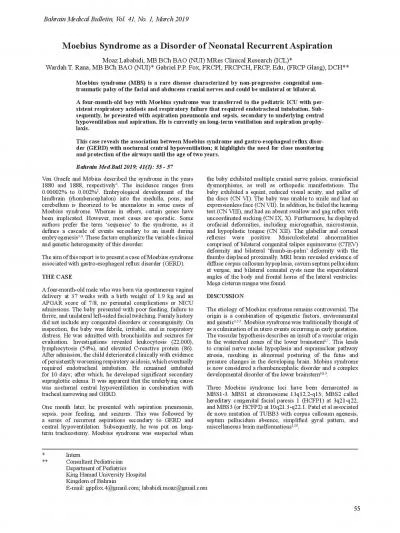PDF-Efficient columnar storage in B tre es Goetz Graefe He
Author : test | Published Date : 2015-05-17
This short note propose a data compression method that reuses traditional on disk tree stru tures with only minor changes yet achieve storage density and scan performance
Presentation Embed Code
Download Presentation
Download Presentation The PPT/PDF document "Efficient columnar storage in B tre es G..." is the property of its rightful owner. Permission is granted to download and print the materials on this website for personal, non-commercial use only, and to display it on your personal computer provided you do not modify the materials and that you retain all copyright notices contained in the materials. By downloading content from our website, you accept the terms of this agreement.
Efficient columnar storage in B tre es Goetz Graefe He: Transcript
Download Rules Of Document
"Efficient columnar storage in B tre es Goetz Graefe He"The content belongs to its owner. You may download and print it for personal use, without modification, and keep all copyright notices. By downloading, you agree to these terms.
Related Documents

